The other day I was outside sprinkling salt on the treacherous patches of ice scattered haphazardly on our driveway, when M posed the question, “mommy, why are you doing that?” I explained to him that salt lowers the freezing point of water, causing the ice to melt quicker. M pondered that and then replied, “well, the puddle is a liquid, but then it froze and turned into ice, which is a solid.” I have been teaching M about the three states of matter, so I was THRILLED when he was able to transfer what he had learned about solids and liquids and apply it to situation that was relative to him.
A few days prior, M and I had froze some coloured water in balloons in order to demonstrate a liquid turning into a solid. Luckily, I had placed them back into the freezer, waiting for another teachable moment to present itself… and here it was!
Melting Ice Globes
My bugs, cousin O, and I went into the basement so we could use the DIY light table we had constructed a while back. The coloured ice globes looked really lovely once illuminated by the light table, and it was great for the boys to see how the light transferred through the ice, showing all its cracks, bubbles, and imperfections.
This was also a good opportunity to teach the boys about how ice freezes and why the centre of our ice globes appeared much more cloudy/opaque than the outside. (In case you are wondering, it is because ice freezes from the outside first, causing all of the minerals and trapped air bubbles to move to the unfrozen centre. Once the centre freezes, it appears cloudy due to all of the trapped air bubbles).
I gave the boys each a spray bottle and a shaker filled with salt and told them that their job was to melt the ice globes.
The boys soon noticed the ice globes were starting to melt, and develop tiny craters, wherever they had sprinkled the salt. The water also helped to speed up the process. I explained to the boys that salt lowers the freezing point of water which forces the ice to melt and prevents the water from refreezing. Salt needs to have at least some water present in order for it to melt the ice. The salt dissolves in the water, lowering the freezing point and melting the ice around it.
Earlier in the week, M had learned a little bit about molecules and the molecular properties of the three states of matter, so I used this opportunity to review some of what we learned. The molecules of water in its liquid state move around more (they have more kinetic energy) than the molecules of water in its solid state (ice), so the ice melts from the heat/energy generated by the liquid water molecules.
After a while we decided to move our experimenting outdoors, because the weather was so beautiful! I placed our tub onto our DIY water-table and gave the boys a few more tools to help them break apart their ice globes, and speed up the melting process.
At one point cousin O pointed to where the yellow and blue ice globes were melting and exclaimed, “look auntie! The water is turning green!” And just like that, it became a lesson in colour mixing as well 😉
The heat/energy from the sun helped to speed the melting process along!
Our yard is covered in a thick blanket of snow, so it didn’t take long for the boys to start shovelling some snow in with the ice globes to see what would happen…
The boys had a lot of fun experimenting, smashing, and chiseling! I think they may even have learned some new science concepts! All in all, it was a great way to keep them busy for the afternoon!
Click on the links to see some of the other science experiments/activities we have done, and to get ideas for some fun and simple sensory table play!
Thanks for stopping by!
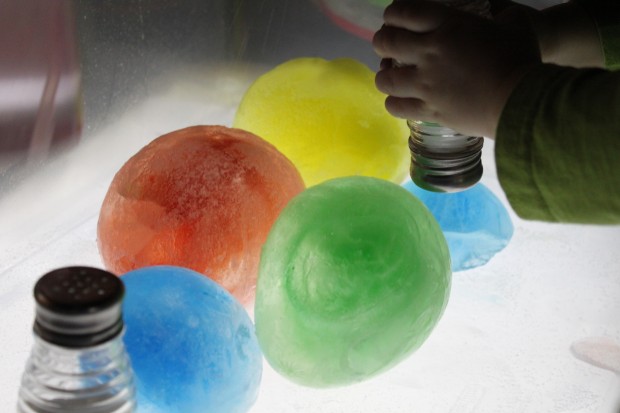
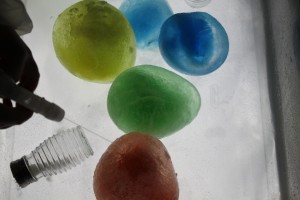
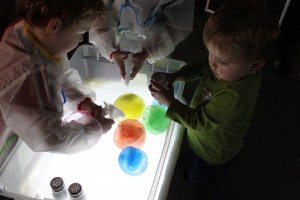
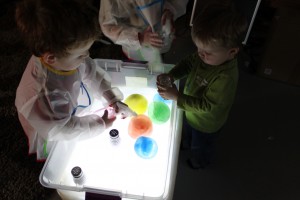
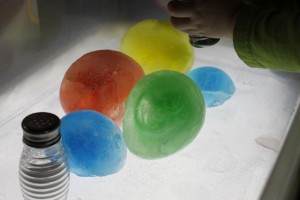
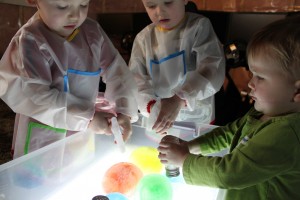
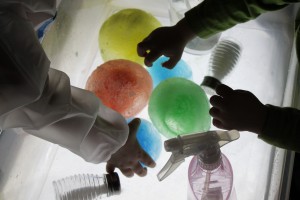
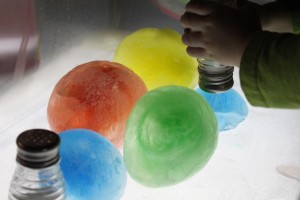
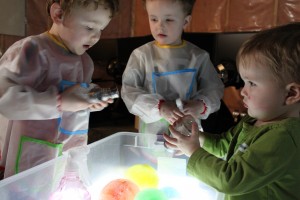
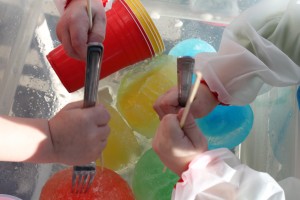
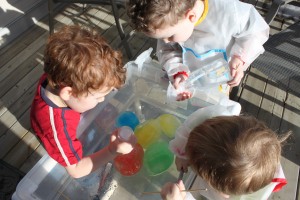
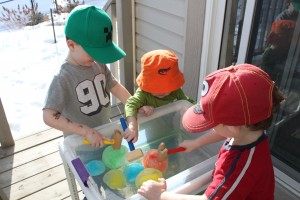
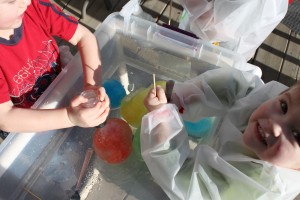
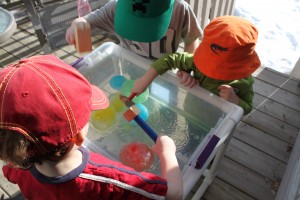
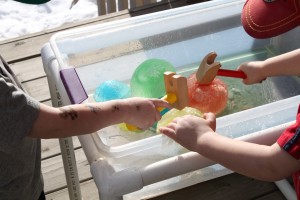
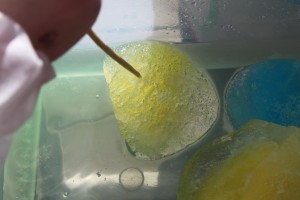
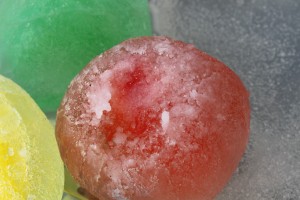
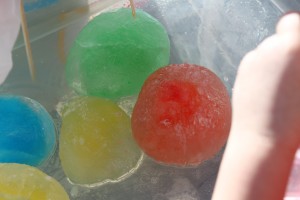
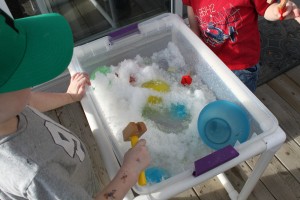
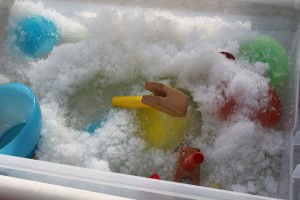
0 Comments
Trackbacks/Pingbacks